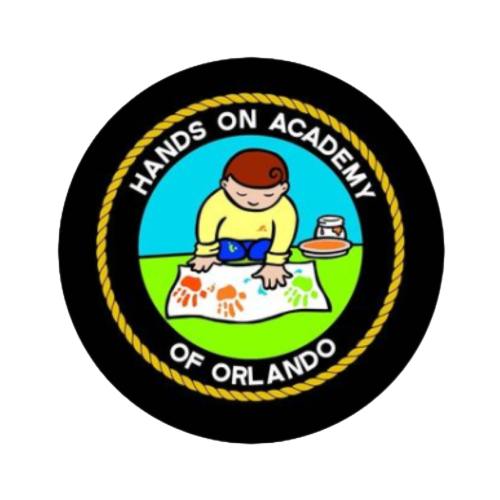Financial Assistance for Childcare: Understanding Your Options

For many families, childcare is an essential service that allows parents to balance work, family life, and personal commitments. However, the cost of childcare can be a significant financial burden, making it challenging for families to access quality care. At Hands-On Academy of Orlando, we understand the importance of affordable childcare and are committed to supporting families by providing information on financial assistance options that can help ease the financial strain.
In this blog post, we will explore various financial assistance options for childcare, providing an in-depth look at government programs, employer-sponsored benefits, and other financial resources that can help make childcare more affordable. Whether you’re looking for subsidies, tax credits, or flexible payment plans, this guide will help you navigate your options and make an informed decision for your family’s needs.
The Importance of Financial Assistance for Childcare
Childcare is a fundamental part of a child’s early development, but for many parents, the cost of quality care can be overwhelming. According to the U.S. Department of Health and Human Services, families should ideally spend no more than 10% of their household income on childcare. However, many families find themselves paying much more than that, especially in areas with higher living costs.
The financial burden of childcare can affect a family’s overall well-being, limiting their ability to save for other needs, invest in their future, or enjoy work-life balance. Thankfully, there are a number of financial assistance programs and options available that can help reduce the cost of childcare and make it more accessible.
1. Government Assistance Programs
One of the primary sources of financial assistance for childcare comes from government programs. These programs are designed to support families who meet certain income and eligibility requirements. Here’s an overview of some of the most common government-funded childcare assistance programs:
a) Child Care and Development Fund (CCDF)
The Child Care and Development Fund (CCDF) is one of the largest sources of federal funding for childcare assistance. The CCDF provides financial assistance to low-income families to help cover the cost of childcare. The program is administered by each state, so eligibility requirements and the amount of assistance available can vary depending on where you live.
To qualify for CCDF, families typically need to meet income and employment criteria, such as working or attending school full-time. The amount of assistance families receive depends on factors such as household income, family size, and the cost of childcare in their area. To apply, you will need to contact your local Child Care Resource and Referral (CCR&R) agency or state childcare assistance office.
b) Head Start and Early Head Start
Head Start and Early Head Start are federal programs that offer free or low-cost childcare to families with children from birth to age 5. These programs are designed to promote school readiness and provide children with the early learning experiences they need to succeed in school and life. Head Start programs are offered in both center-based and home-based formats and are available to families who meet specific income guidelines.
In addition to early education, Head Start and Early Head Start programs provide comprehensive services that include health screenings, nutrition education, and family support services. The goal of these programs is to provide a holistic approach to child development while alleviating the financial burden of childcare for families in need.
c) Subsidized Child Care Vouchers
Many states offer subsidized childcare vouchers to eligible families. These vouchers can be used to pay for childcare at licensed providers, such as daycare centers, family childcare homes, and other licensed caregivers. To qualify for subsidized childcare, families must typically meet income requirements, and the child must be under the age of 13 (though this may vary by state).
Subsidized childcare vouchers are typically issued on a sliding scale, meaning that families with higher incomes may receive less assistance, while families with lower incomes may receive more. The goal is to make quality childcare affordable for families who might otherwise be unable to access it.
2. Tax Credits and Deductions
In addition to government assistance programs, there are also several tax credits and deductions available to help families offset the cost of childcare. These credits and deductions can provide significant savings, making childcare more affordable for working parents.
a) Child and Dependent Care Tax Credit
The Child and Dependent Care Tax Credit is a federal tax credit that helps working parents pay for childcare. This credit is available to families who pay for childcare for children under the age of 13 while they are working or looking for work. The credit can cover a portion of the cost of childcare, and the amount of the credit depends on the family’s income and the number of children in care.
For the tax year 2021, the American Rescue Plan temporarily increased the value of the Child and Dependent Care Tax Credit, providing up to $4,000 for one child and $8,000 for two or more children. The credit is refundable, meaning that families can receive the full amount even if they don’t owe taxes.
b) Flexible Spending Accounts (FSAs)
Many employers offer Flexible Spending Accounts (FSAs) that allow employees to set aside pre-tax dollars for eligible expenses, including childcare. With a Dependent Care FSA, employees can contribute up to $5,000 per year (for individuals or married couples filing jointly) to pay for daycare, preschool, or other childcare services.
The money you contribute to an FSA is deducted from your paycheck before taxes, which can lower your taxable income and help you save money. However, it’s important to note that FSA contributions must be used within the plan year, so careful planning is necessary to ensure that you don’t lose any unused funds.
c) Employer-Sponsored Childcare Benefits
Some employers offer childcare benefits as part of their employee benefits package. These benefits can include on-site childcare, subsidies for childcare expenses, or referrals to local childcare providers. Employers may also partner with childcare centers to offer discounted rates for employees. If your employer offers these types of benefits, it’s worth exploring how they can help offset the cost of childcare.
3. Private Financial Assistance and Scholarships
In addition to government programs and tax benefits, there are also private organizations and charitable foundations that offer financial assistance for childcare. Some childcare centers, like Hands-On Academy of Orlando, may provide scholarships or sliding scale fees based on a family’s financial situation.
Private organizations, such as non-profits or community foundations, may also offer scholarships to help cover the cost of childcare. These organizations often have specific eligibility criteria and may require documentation of financial need. Be sure to research local organizations or ask your childcare provider about available scholarships or discounts.
4. Payment Plans and Sliding Scale Fees
Many childcare providers, including Hands-On Academy of Orlando, offer payment plans and sliding scale fees to make childcare more affordable. A sliding scale fee adjusts the cost of childcare based on a family’s income, making it more affordable for families with lower incomes. Payment plans allow families to spread out the cost of childcare over several months, reducing the financial burden of paying a lump sum upfront.
When looking for childcare, be sure to ask about the payment options available at your provider. Some centers also offer discounts for multiple children or long-term commitments, which can help reduce the overall cost of care.
5. State and Local Assistance Programs
In addition to federal programs, many states and local governments offer their own childcare assistance programs. These programs can vary significantly by location, so it’s important to research the specific resources available in your area. Local resource and referral agencies often have up-to-date information on state and county-specific programs, such as subsidized childcare, vouchers, or grants.
How Hands-On Academy Supports Families
At Hands-On Academy of Orlando, we are committed to providing high-quality childcare at affordable prices. We understand that financial assistance is an important consideration for many families, and we strive to make childcare accessible to all families in our community. In addition to offering competitive pricing, we work with families to explore financial assistance options and help them navigate available resources.
Our goal is to ensure that every child has access to the best educational opportunities, regardless of financial circumstances. If you are considering enrolling your child at Hands-On Academy, we encourage you to reach out to discuss financial assistance options, payment plans, and any other resources that may help make our program more affordable for your family.
Conclusion
Navigating the costs of childcare can be challenging, but there are a variety of financial assistance options available to help ease the burden. From government programs like the Child Care and Development Fund (CCDF) to tax credits, employer benefits, and private scholarships, there are numerous ways to make childcare more affordable. By taking advantage of these resources, you can ensure that your child receives the high-quality care and education they deserve, without breaking the bank.
If you’re considering childcare options for your family, it’s also important to understand the best age to start childcare and the benefits of early enrollment. To learn more about these topics, check out our articles on
What’s the Best Age to Start Childcare and
7 Advantages of Early Childcare Enrollment. These resources will help you make an informed decision about your child’s early education and care.

























